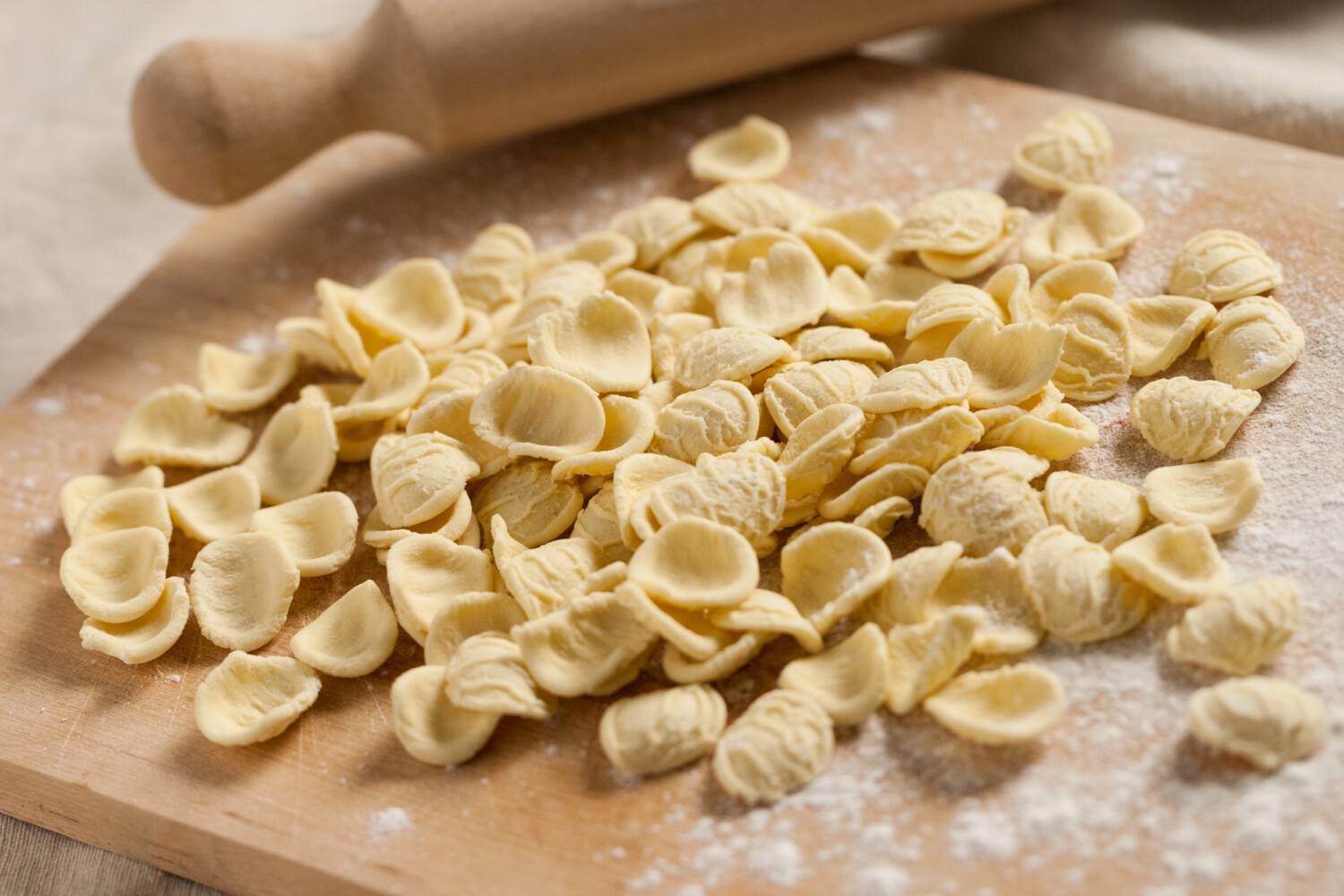If you’d like to learn how to make fresh pasta from scratch, you can always find an online tutorial and follow the recipe.
Or, if you have the means, you could go to historic Bari, Italy, a port city on the Adriatic Sea, and find out how it’s really done. Who better to teach you than some real-life, Italian “nonnas” (grandmas)? Their pasta-making technique has been passed down through generations and perfected over lifetimes of practice. In fact, it’s older than the alleyway where they set up shop.
Along this stone-paved street (officially called Strada Arco Basso but nicknamed Via delle Orecchiette), about a dozen grandmas sit at long, wooden tables outside their ground-floor kitchens. Chatting and singing, they spend hours making their specialty, orecchiette, the ear-shaped pasta for which Bari has become renowned.
Passersby are often taken aback by the speed and the craftsmanship of the ladies, who roll out dough, cut bite-sized pieces and use a knife and their own fingers to create the tiny “ears.” The cup-shaped pasta also has tiny ridges that Italian sauce can stick to.

“This is our workshop, our space, our everything,” Nonna Nunzia Caputo told Insider about their worktables, which are right in front of their homes. “By the road, see. One step and we’re outside, one step and we’re inside. This is an art that doesn’t have to be put aside. Rather, it was gifted to us, and we have to look after it and pass it down.”
On the one hand, the process seems quite simple.
“There is no salt,” Caputo said. “There are no eggs. It’s only kneading, elbow grease. This is homemade pasta.”
But when asked for the specifications of how much semolina flour and water to use, Caputo doesn’t give a straight answer. The nonnas just know.
“Whatever works,” she said. “I could never give you a precise calculation. It depends on the weather, the temperature.”
Caputo also says the orecchiette is the perfect sized pasta for Braciola ragout, which is “the authentic Sunday dish in Bari.”
The nonnas have been making pasta here for so long that it’s become a tourist destination.
“Get there early to beat the crowds and buy fresh or dried to take home for 2.50 euros a bag,” this TikTok video by Si and Lauren, aka the Consuming Couple, advises. “It’s certainly a memorable experience and a taste of old-school Italian life.”
@consumingcouple Nonnas making fresh pasta daily in the streets of Bari, Italy

#nonna #freshpasta #italianfood #foodtravel
In fact, some walking tours of the city are fashioned around the pasta nonnas. The Bari Walking Tour with Pasta Experience (a two-hour walking tour that culminates in a pasta-making “class” with the nonnas) has received an average rating of 4.5 out of 5 on Tripadvisor from 45 reviewers.
“This was … an AMAZING experience making orecchiette pasta with one of the many pasta experts in Bari. She even cooked our pasta so we got to eat the fruits of our labor,” wrote Andria S on Tripadvisor.
According to Your Travel to Italy With Ana Patricia, a bag of the nonnas’ pasta makes for an excellent souvenir, since after the nonnas dry it — for a few hours or overnight, depending on the outside conditions — it becomes easy to travel with and doesn’t spoil easily. And you can still see the difference fresh pasta makes when you get it home and cook it.
If you’re more of a sweets lover, they also sell homemade biscotti and amaretto cookies.
This story originally appeared on Simplemost. Check out Simplemost for additional stories.


